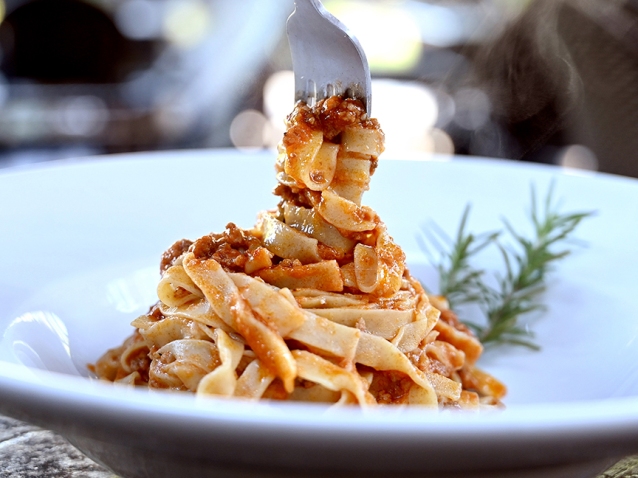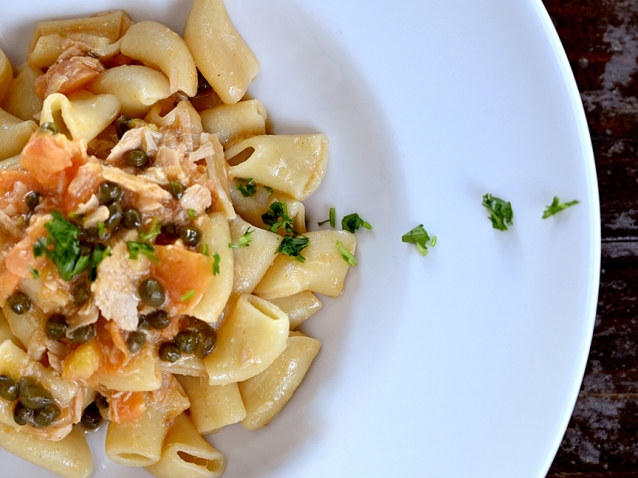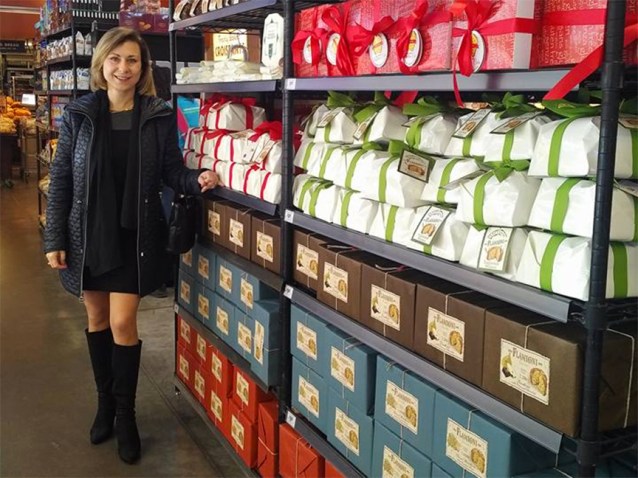 Above: a European winemaker hosts a tasting of his wines in Colorado in late February, 2020.
Above: a European winemaker hosts a tasting of his wines in Colorado in late February, 2020.
“Tariff threats return,” read one of the wine retailer email newsletters that reached my inbox over the last week. “Our business could totally get blown up by a trade Death Star.”
“[My business partner] and I have spent 19 years building our business,” reported another, “and it could get wiped out in one blow. For better or worse, we’ve tied our love of European wine to the life of our shop. We have 25 employees, many with families; we pay their health insurance; we pay a boatload of taxes. [Our shop] is a micro business, but there are many thousands of employees and owners around the country who will be similarly affected — to say nothing of how this will impact our wine loving customers.”
Across the U.S., wine retailers are mobilizing their customer base and trade networks in an effort to raise awareness of how potentially increased and expanded tariffs on European wines could — literally — decimate their ranks.
Most of the roughly 20 or so similarly conative messages received over the past few weeks weeks point to a portal recently created by the U.S. Wine Trade Alliance (USWTA), an advocacy group formed by European wine-focused small businesses. It streamlines the process whereby the user, whether trade member or consumer, can comment on the U.S. Trade Representative site and express their concerns regarding the tariffs currently under consideration. The deadline for comment is July 26. The decision on whether or not to remove, expand, and/or increase the duties will be announced on August 12.
With so much energy being poured into this campaign by understandably qualmish wine merchants, it’s hard to imagine that the U.S. government won’t take note of the existential threat posed by the potential tariffs and their resulting dismay.
But tradesfolk in our country’s major cities often forget that they remain a minority in our nation.
I was reminded of this when I recently contacted the office of a top anti-tariff congressperson whose district lies just north of metropolitan Houston where I live. The area where he lives and dines (as I discovered) is one of greater Houston’s more affluent. But despite the extreme concentration of wealth in his neck of the woods (Houstonians will get the pun), there isn’t much in terms of haute cuisine in the community he represents beyond the quintessential high-end and highly predictable steak house franchises.
When I spoke to the owner and executive chef of the seemingly lone high-concept restaurant there (where, I learned, said representative frequently eats), the food professional told me that while he was aware of the tariff issue, it hasn’t affected his business at all.
How is that possible? I asked him.
His wine program does include a sizable allocation of expensive French wines. But those lots were purchased some time ago, he said, partly as an investment (a classic restaurant model). Like the guests he serves, he focuses primarily on top California wines.
And when he revealed his overarching approach to his restaurant group’s wine programs, the axiomatic delivery rolled off his palate so mellifluously that I can’t imagine it was his first time uttering the phrase.
“If it doesn’t have the grape name on the label,” he informed me, “they ain’t going to drink it.”
He was referring to pecunious Americans’ well-documented penchant and preference for “varietal wines,” bottlings sometimes even blended using different varieties but labeled with a single grape name, e.g., “Chardonnay,” “Merlot,” “Cabernet Sauvignon, Pinot Noir,” etc.
His aphorism rang true when I spoke to said representative’s office. The person on the other line seemed entirely unaware of the heightened interest in European wines that has taken shape in this country over the last two decades.
For the record, both the restaurateur and the government official with whom I spoke were exceedingly generous with their time and both were glad to lend a hand in connecting me with the persons I was trying to reach.
But the notion that the tariffs under consideration would disproportionately affect Americans without achieving the desired result was something that hadn’t previously or remotely crossed their minds.
Wine culture has grown enormously in the U.S. over the last 20 years or so. But for most Americans, it doesn’t really matter where that Pinot Grigio comes from. It might as well be from Australia or Texas, as long as the grape name is inscribed on the package.
Just think of how wine is sold in American airports (or should I say, try to remember the way wine used to be sold in airports). In these transport hubs, where Americans from all walks of life and of all stripes meet (however fleetingly), the sale of wine is primarily categorized, classified, and bartered using its designate ampelonym: what wines do you have by the glass? is commonly answered by Chard, Sauv Blanc, Cab, Syrah, Pinot, and Merlot.
Shortly before the pandemic redefined “living” in America, a European winemaker and I took a road trip that led us from Houston to Dallas to Tulsa to Boulder. We hosted well-attended wine tastings in each city we visited.
But what about all the places and people in between?
Until a majority of Americans dives into the nuanced and subtle differences between Nebbiolo from Langa and its varietal counterpart from upper Piedmont, the threat of wine tariffs will be as ephemeral to them as it is existential to us.
Please visit the USWTA portal and make your voice heard!

















